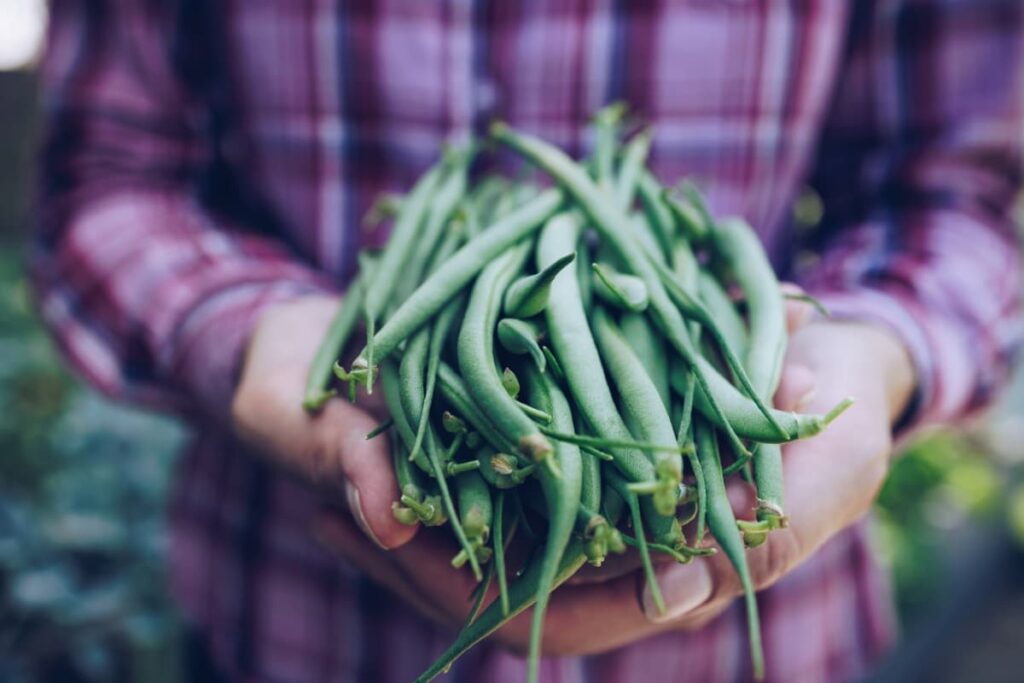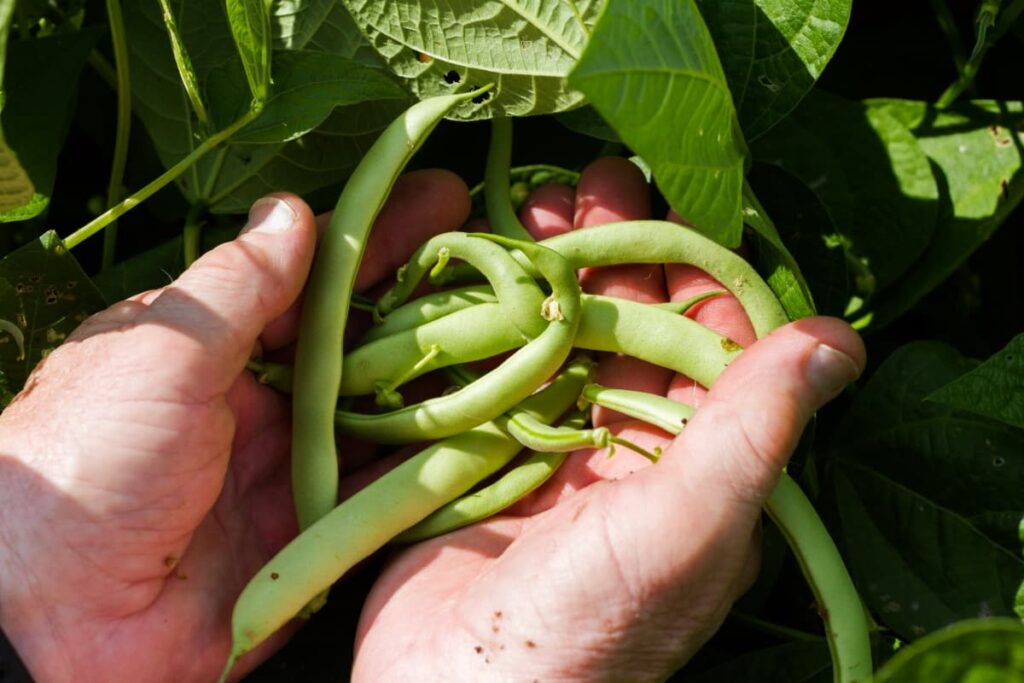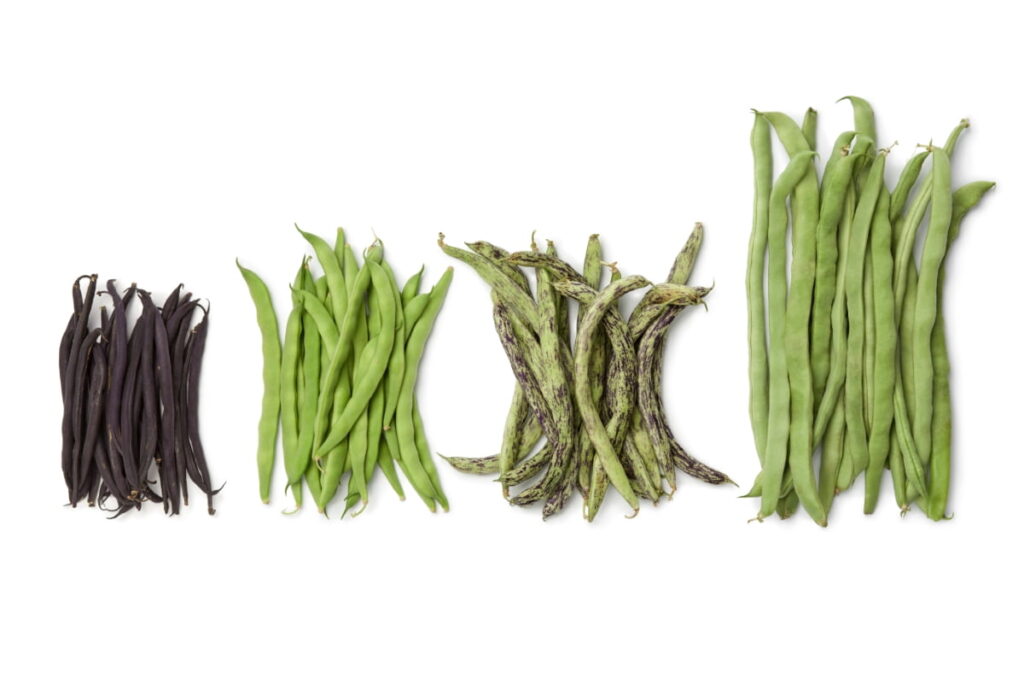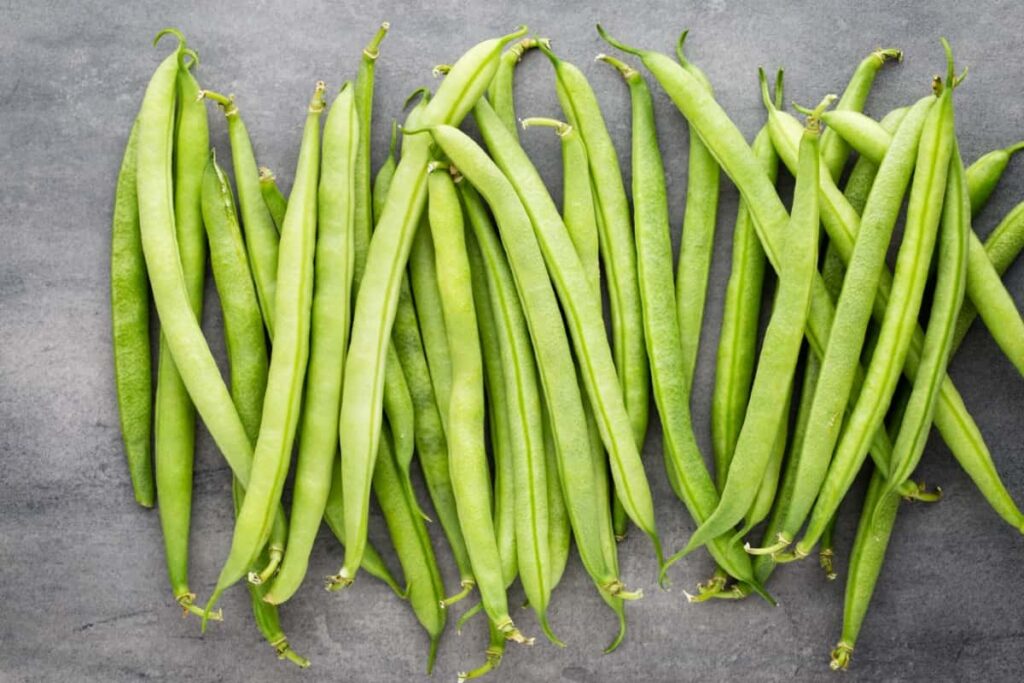Greenhouse Beans are a popular choice for year-round cultivation in controlled environments. These versatile legumes belong to the family Fabaceae. They are scientifically known as Phaseolus vulgaris L. Greenhouse Beans thrive under the protection of a greenhouse structure that provides ideal growth conditions. They offer the flexibility to extend the growing season beyond traditional outdoor conditions.

Selecting the Right Bean Varieties for Your Greenhouse
It depends on various factors such as your location, climate, available space, and personal preferences. Some popular Bean varieties suitable for greenhouse cultivation include;
- Provider: A bush Bean variety known for its early maturity and high yields.
- Blue Lake: A classic pole Bean variety with tender pods and excellent flavor.
- Maxibel: A French filet Bean with long, slender pods and exceptional taste.
- Dragon Tongue: A visually striking heirloom variety with purple-streaked pods and a delicate flavor.
- Tendergreen: A bush Bean variety known for its high productivity and delicious, tender pods.
- Purple Queen: An eye-catching purple bush Bean with excellent flavor and disease resistance.
- Scarlet Runner: A vigorous pole Bean variety with attractive red flowers and edible pods.
Understanding Your Greenhouse Environment
Each greenhouse has unique conditions that can impact plant growth. Factors like temperature, humidity levels, and light exposure play a major role in determining the health of Beans. Monitoring these factors regularly allows you to make adjustments for an optimal growing environment for your plants. Investing in quality monitoring equipment can help you keep track of important metrics and ensure that your Beans thrive year-round. Consider the layout of your greenhouse as well. Air circulation is key to preventing issues like mold or mildew from developing.
Preparing the Greenhouse for Planting
Start by thoroughly cleaning and sanitizing the greenhouse space to remove any pests or diseases that could harm your plants. Next, check the structure for any needed repairs and ensure optimal ventilation for healthy growth. Organize your planting area efficiently, considering factors like sunlight exposure and spacing between rows. Setting up a trellis system will support Bean vines as they grow upward, maximizing space usage in your greenhouse.
In case you missed it: Choosing the Best Fertilizer for Green Beans for Maximum Yield

Amend the soil with organic matter to ensure that it is well-draining and fertile. Test the pH levels to guarantee an ideal growing environment for your green Beans. Set up a watering schedule and invest in quality irrigation equipment to keep your plants hydrated without overwatering.
Seed Starting and Transplanting
Start by selecting high-quality seeds from reputable suppliers. When choosing the right varieties for your greenhouse, consider factors like disease resistance and growth habits. Before planting, make sure you have the appropriate containers or trays for germinating the seeds. Use a well-draining soil mix and provide adequate warmth and light to encourage healthy sprouting.
Once your Bean seedlings have developed their first true leaves, they are ready for transplanting into larger pots or directly into the greenhouse soil. Handle them gently to avoid damaging delicate roots during this process. To prevent root rot, ensure that your transplants are watered regularly but not excessively. Monitor their progress closely as they adjust to their new environment, providing support like stakes if needed.
Irrigation and Humidity Management
Beans thrive in moist but not waterlogged soil, so finding the right balance is crucial for their growth. Overwatering the Beans can lead to root rot while underwatering can stunt plant development. Monitor soil moisture levels regularly and adjust your watering schedule accordingly. Consider using soaker hoses to deliver water to the plant base, minimizing waste and promoting healthy root growth.
Humidity levels inside the greenhouse also play a significant role in Bean cultivation. Beans prefer moderate humidity levels, around 50-70%, to prevent issues like mold or mildew. To maintain optimal humidity, you can use fans or ventilation systems to circulate air effectively throughout the greenhouse. Additionally, misting your plants occasionally can help increase humidity levels without over-saturating the soil.
Pest and Disease Control in Greenhouse Beans
When it comes to pests, aphids and spider mites can affect your Bean plants if left unchecked. Keeping a close eye on your plants for any signs of infestation is key. Implementing preventative measures such as regular inspections, maintaining proper air circulation, and using insecticidal soaps can help deter these pesky intruders. Additionally, introducing beneficial insects like ladybugs can act as natural predators against common greenhouse pests.
In case you missed it: French Beans Cultivation Information

When it comes to diseases, keeping the greenhouse environment clean and free of debris can prevent issues like powdery mildew or bacterial infections from taking hold. Proper spacing between plants also reduces the risk of disease spread.
Pollination Strategies for Greenhouse Beans
An effective strategy is hand pollination. Gently shake the Bean plants or use a brush to transfer pollen from one flower to another. This method ensures that each flower receives adequate pollen for optimal Bean production. Another technique is using fans to simulate wind movement within the greenhouse.
This helps disperse pollen throughout the plants, increasing the chances of successful pollination. For those growing pole Beans, providing support structures such as trellises not only aids in plant growth but also makes it easier for pollinators like bees to access the flowers.
Harvesting and Post-Harvest Handling
Harvesting should be done when the pods are plump and firm but before they become overly mature and tough. Gently pull each Bean pod off the vine to avoid damaging the plant. After harvesting, it’s crucial to handle the Beans with care to ensure their longevity. Remove any damaged or discolored pods immediately to prevent spoilage.
In case you missed it: Growing Red Kidney Beans Information

Place the harvested Beans in a well-ventilated area to allow them to dry naturally. To store your freshly picked Beans, consider freezing or canning them for future use. Remember that proper post-harvest handling is key to preserving the flavor and nutritional value of your greenhouse-grown Beans.
Season Extension and Year-Round Production Tips
The main strategy is to leverage technology such as supplemental lighting to mimic natural sunlight during shorter days. This helps extend the hours of light exposure for your Bean plants, promoting continuous growth throughout the year. It’s also crucial to monitor temperature fluctuations within your greenhouse. Investing in a reliable heating system will ensure that your Beans thrive even in colder months.
With these season extension techniques and production tips, you can successfully cultivate greenhouse Beans all year round, ensuring a bountiful harvest regardless of external conditions. By implementing these planting tips, you can maximize the yield and quality of your Bean harvests, ensuring a steady supply of fresh, flavorful Beans regardless of the season.
- Profitable Village Farming Business Ideas in 2024
- High-Yield Aquaculture: Fast-Growing Fish for Farming
- Effective Fish Pond Construction Techniques for Beginners
- Irrigation and Water Management in Pineapple Farming
- Blossom to Harvest: Mastering Flowering and Pollination in Papaya Farming
- Pig Fattening Essentials: From Selection to Sale for Beginners
- Raising Wagyu Cattle: A Complete Guide for Premium Beef Production
- Soil Types and Their Water Holding Capacity
- Optimizing Irrigation Schedules for Coconut Groves for Enhanced Yield
